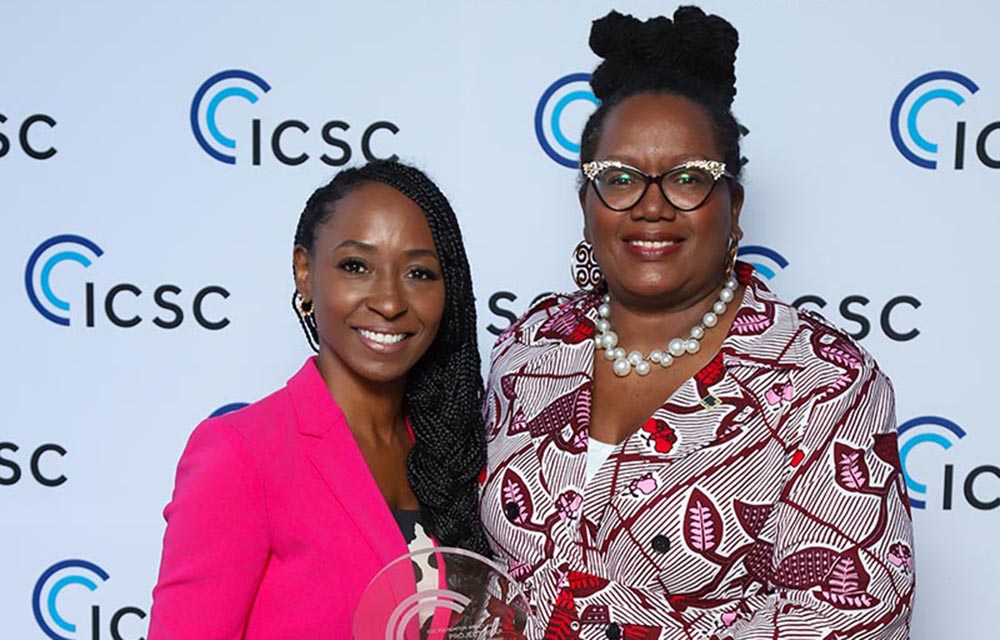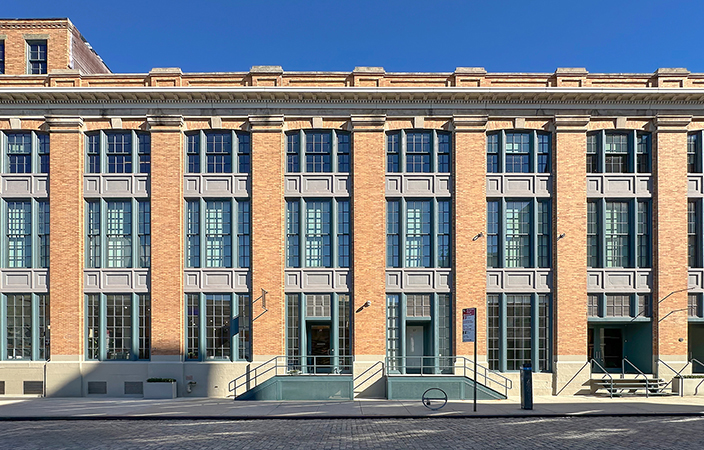News:
Brokerage
Posted: March 20, 2009
NAIOP Upstate New York meets with legislators in Washington
By Thomas Thaney
I was in Washington, D.C. from February 8th through February 11th to take part in the National Legislative Retreat on Capitol Hill for NAIOP, the Commercial Real Estate Development Association. NAIOP is the largest commercial real estate association in the U.S. Along with seminars on national and state issues that affect industrial and commercial development in their chapter areas, we also lobbied our local senators and congressmen and congresswomen on concerns that affect our local regions.
The important issues that we discussed that affect upstate New York with regards to commercial development are the following:
1. Taxes:
a. Carried interest, which is compensation provided to a general partner that is tied to the ultimate success of a development venture. It is currently taxed at the capital gains rate of 15% and there is new legislation that wants to change it to the ordinary income rate of 35%. NAIOP opposes this change because it will decrease the incentive to invest in new commercial projects which create many jobs.
b. Leasehold improvement depreciation, which currently allows developers to depreciate the cost of tenant improvements over a 15-year period with new legislation wanting to change it to 39 years. NAIOP opposes this change due to the fact that most commercial leases are between five and 10 years long.
c. Brownfield remediation expensing, which currently allows the costs incurred in cleaning up a Brownfield site to be immediately expensed by developer. This provision, which is good for developers, scheduled to run out at the end of 2009, needs to be extended by the government. If it is not extended, there will be no incentive for developers to revitalize old properties around the country, many of which are in urban centers.
2. Capital and Credit:
a. As a result of the collapse of financial markets in 2008, the availability of credit to refinance existing debt on performing loans has become severely constrained. In 2009, an estimated $300-$400 billion of performing commercial real estate debt will mature and need to be refinanced.
With continued unavailability of credit due to the problems in the banking system and the Commercial Mortgage Backed Securities (CMBS) market, commercial real estate faces a severe liquidity shortfall unless strong action is taken by the federal government. We suggested that the Federal Reserve should establish a credit facility for commercial real estate debt. Another option would be to extend the existing Term-Asset Backed securities Loan Facility (TALF). This was created to purchase consumer-debt backed credit to include commercial mortgage backed securities and commercial mortgage debt. In addition, accounting rules requiring that assets held by financial institutions be "marked-to-market" are having the effect of worsening the capital condition of these institutions, undermining federal efforts to foster increased lending.
These rules should be adapted so as to take into account the current conditions of the financial markets and ensure that refinancing of performing loans that mature in 2009 can occur. This is probably the issue of most concern for western New York development.
Joining me on our trip were John D'Amanda of Chamberlain, D'Amanda Law Firm; Brendon Crossing from the Commercial Loan Dept. at Canadaigua National Bank; Dave Topian from Westminster Real Estate Advisors; Laura Zaepfel of Uniland Development; and Karen McCready, executive director of NAIOP Upstate New York Chapter.
We met with staff in senator Schumer and Gillibrand's offices, with staff in congresswoman Slaughter, congressmen Higgins and Maffei's offices, and personally met with congressmen Massa, and Lee.
We all agreed that no matter which political side you come from this plan is necessary to stabilize the faltering markets that exist today and to reintroduce confidence back into the American economy. It was a very exciting time to be in the nation's capital and to be a part of the process.
Thomas Thaney is the 2009 president of NAIOP Upstate New York, Pittsford, N.Y.
American Recovery and Reinvestment Act of 2009
Select Tax Provisions Supported by NAIOP
Extension of Bonus Depreciation. Businesses are allowed to recover the cost of capital expenditures over time according to a depreciation schedule. Last year, Congress temporarily allowed businesses to recover the costs of capital expenditures made in 2008 faster than the ordinary depreciation schedule would allow by permitting these businesses to immediately write-off fifty percent of the cost of depreciable property (e.g., equipment, tractors, wind turbines, solar panels, and computers) acquired in 2008 for use in the United States. The bill would extend this temporary benefit for capital expenditures incurred in 2009. This proposal is estimated to cost $5.074 billion over 10 years.
Delayed Recognition of Certain Cancellation of Debt Income. Under current law, a taxpayer generally has income where the taxpayer cancels or repurchases its debt for an amount less than its adjusted issue price. The amount of cancellation of debt income ("CODI") is the excess of the old debt's adjusted issue price over the repurchase price. Certain businesses will be allowed to recognize CODI over 10 years (defer tax on CODI for the first four or five years and recognize this income ratably over the following five taxable years) for specified types of business debt repurchased by the business after December 31, 2008 and before January 1, 2011. This proposal is estimated to cost $1.622 billion over 10 years.
5-Year Carryback of Net Operating Losses for Small Businesses. Under current law, net operating losses ("NOLs") may be carried back to the two taxable years before the year that the loss arises (the "NOL carryback period") and carried forward to each of the succeeding twenty taxable years after the year that the loss arises. For 2008, the bill would extend the maximum NOL carryback period from two years to five years for small businesses with gross receipts of $15 million or less. This proposal is estimated to cost $947 million over 10 years.
Extension of AMT relief for 2009. The bill would provide more than 26 million families with tax relief in 2009 by extending AMT relief for nonrefundable personal credits and increasing the AMT exemption amount by $70,950 for joint filers and $46,700 for individuals. This proposal is estimated to cost $69.759 billion over 10 years
Extension of Enhanced Small Business Expensing. In order to help small businesses quickly recover the cost of certain capital expenses, small business taxpayers may elect to write-off the cost of these expenses in the year of acquisition in lieu of recovering these costs over time through depreciation. Until the end of 2010, small business taxpayers are allowed to write-off up to $125,000 (indexed for inflation) of capital expenditures subject to a phase-out once capital expenditures exceed $500,000 (indexed for inflation). Last year, Congress temporarily increased the amount that small businesses could write-off for capital expenditures incurred in 2008 to $250,000 and increased the phase-out threshold for 2008 to $800,000. The bill would extend these temporary increases for capital expenditures incurred in 2009. This proposal is estimated to cost $41 million over 10 years.
Spending Provisions - Infrastructure/Energy
Highway Infrastructure:
* $27.5 billion for highway and bridge construction projects and $1.5 billion for competitive grants to state and local governments for transportation investment.
Transit:
* New Construction: $750 million for Capital Investment Grants for new commuter rail or other light rail systems to increase public use of mass transit and to speed projects already in construction.
* Upgrades and Repair: $750 million to modernize existing transit systems, including renovations to stations, security systems, computers, equipment, structures, signals, and communications.
* Transit Capital Assistance: $6.9 billion to purchase buses and equipment needed to increase public transportation and improve intermodal and transit facilities.
* Amtrak: $1.3 billion to improve the speed and capacity of intercity passenger rail service. The Department of Transportation's Inspector General estimates the North East Corridor alone has a backlog of over $10 billion.
* High Speed Rail and Intercity Passenger Rail Grants: $8 billion to advance the development of high speed rail and to improve the intercity passenger rail service in corridors across the nation. The States for Passenger Rail Coalition estimates that there are over $1.5 billion in projects that are ready-to-go.
Energy Efficiency & Conservation Block Grants:
* $3.2 billion will assist states, local governments and Indian tribes in implementing strategies to reduce fossil fuel emissions created as a result of activities within the jurisdictions of the eligible entities and reduce the total energy use. Activities eligible to receive funding include: conducting residential and commercial building energy audits; establishing financial incentives programs for energy efficiency improvements; grants to non-profits organizations to perform energy efficiency retrofits; developing/implementing programs to conserve energy used in transportation; developing and implementing building codes and inspections services to promote building energy efficiency; installing light emitting diodes (LEDs); and developing, implementing, and installing on or in any government building onsite renewable energy technology that generates electricity from renewable sources.
Brownfields:
* $100 million for Brownfields competitive grants to address environmental site assessment and cleanup, 25 percent of which are mandated by law to address petroleum contamination. Funds will capitalize revolving funds and provide low interest loans, job training grants and technical assistance to local governments and non-profit organizations. In fiscal year 2008, EPA was able to fund only 37 percent of the applications it received for this program.
For more information on the Upstate New York Chapter, please contact Karen McCready at 585-249-9232.
Tags:
Brokerage
MORE FROM Brokerage
SABRE coordinates sale of six properties totaling 199,845 s/f
Huntington, NY SABRE Real Estate Advisors has completed the sale of six commercial properties across Long Island and Northern New Jersey, further underscoring the firm’s strength as a trusted partner in complex real estate transactions. The deals were led by executive vice presidents Jimmy Aug and Stu Fagen, whose combined expertise continues to drive exceptional results for clients across the region.

Quick Hits
Columns and Thought Leadership

Strategic pause - by Shallini Mehra and Chirag Doshi
Many investors are in a period of strategic pause as New York City’s mayoral race approaches. A major inflection point came with the Democratic primary victory of Zohran Mamdani, a staunch tenant advocate, with a progressive housing platform which supports rent freezes for rent

Lasting effects of eminent domain on commercial development - by Sebastian Jablonski
The state has the authority to seize all or part of privately owned commercial real estate for public use by the power of eminent domain. Although the state is constitutionally required to provide just compensation to the property owner, it frequently fails to account

Lower interest rates and more loan restructuring can help negate any negative trending of NOI on some CRE projects - by Michael Zysman
Lower interest rates and an increased number of loan restructurings will be well received by the commercial real estate industry. Over the past 12 months there has been a negative trend for NOI for many properties across the country.

Behind the post: Why reels, stories, and shorts work for CRE (and how to use them) - by Kimberly Zar Bloorian
Let’s be real: if you’re still only posting photos of properties, you’re missing out. Reels, Stories, and Shorts are where attention lives, and in commercial real estate, attention is currency.







.jpg)

.gif)